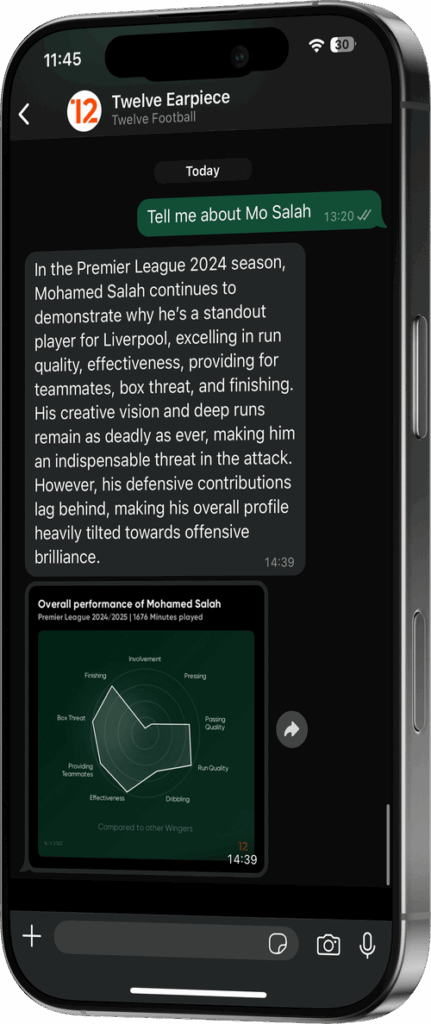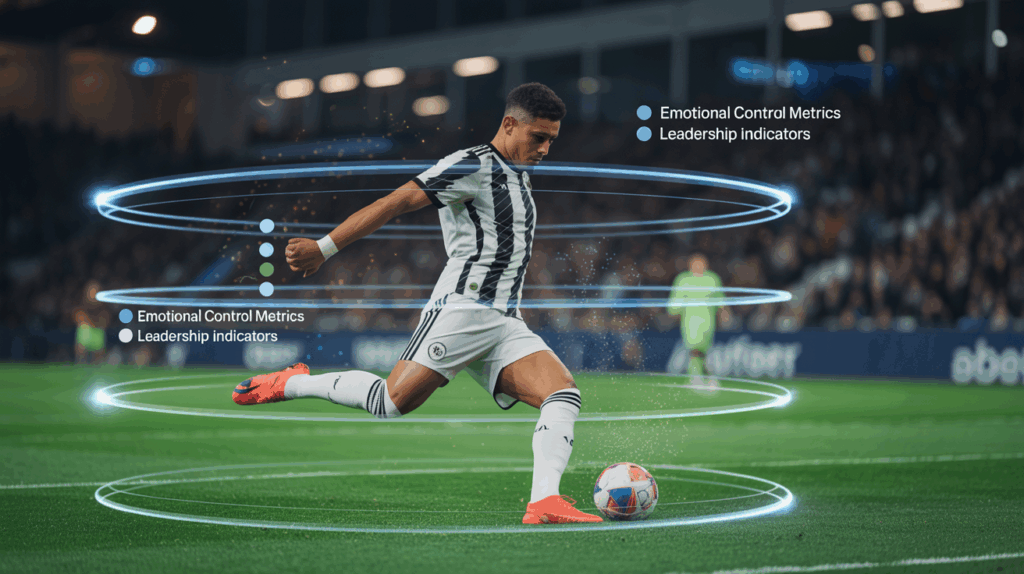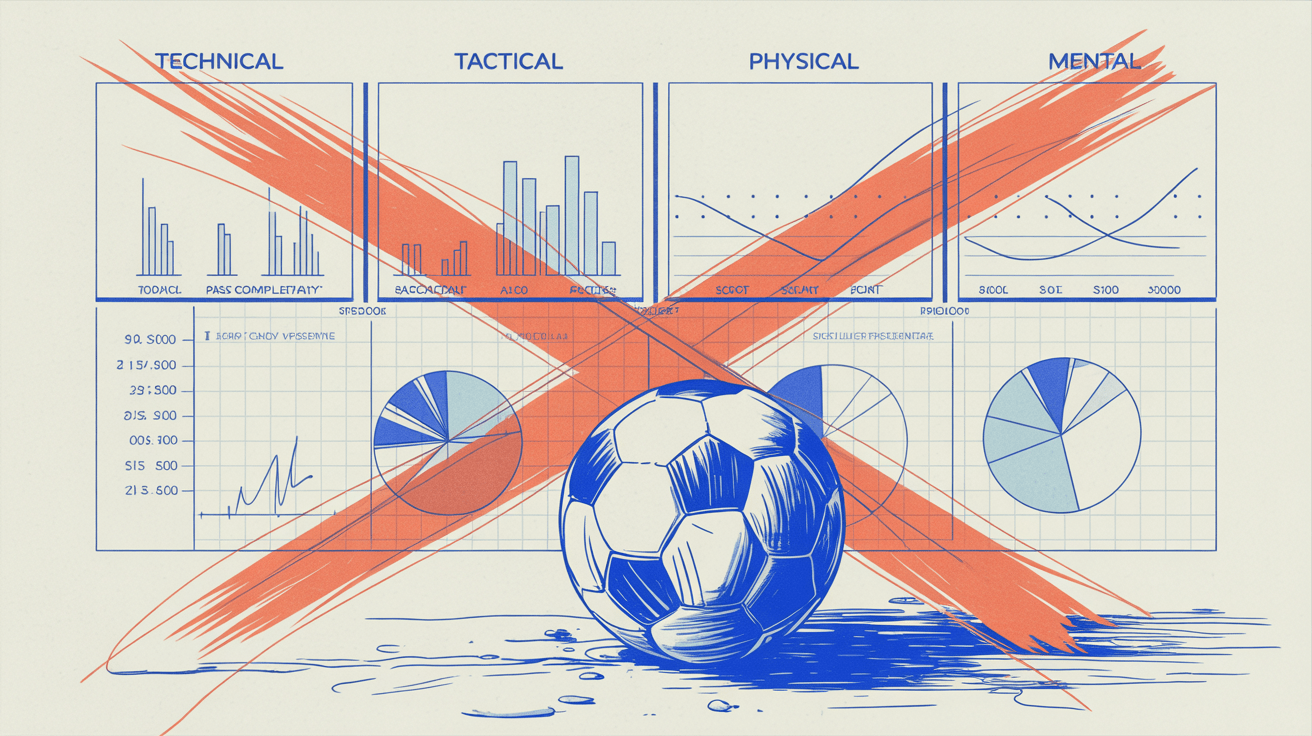Football scouting has traditionally revolved around passion, instinct, and people skills. Picture the old-school scout with a notepad on a windy terrace, searching for that raw talent they have a good feeling about. For years, clubs relied on the nose of experienced scouts who saw something special in a player. But nowadays, data and technology are creeping into the football world, and artificial intelligence (AI) in particular is slowly but surely beginning to change scouting. Where a scout used to rely on gut feeling, they can now be helped by smart algorithms that give them extra eyes and ears.
Three examples of AI in scouting
Modern clubs use a mix of data, video, live, and network scouting to identify talent. AI has particularly revolutionized data scouting, allowing clubs to discover patterns faster in vast amounts of football data. But AI is also beginning to transform video analysis through computer vision and automated player tracking.
AI has particularly had a major impact on data scouting. Thanks to AI, clubs can discover patterns even faster in the mountains of football data available. Instead of manually plowing through statistics, an algorithm can, for example, automatically find strikers who play similarly to a specific example, or identify defenders who are exceptionally good at both tackling and passing. AI is also beginning to help with video scouting (think automatic clips of all ball touches by a player, or computer vision that recognizes players and their actions in footage). The core is: data + AI form a new weapon for scouts to search for talent more efficiently and broadly. Let’s explain three concrete examples of how AI is already being used in practice in football scouting.

#1: Twelve Football: AI assistant via WhatsApp
A surprisingly accessible example of AI in scouting comes from Twelve Football, a Swedish startup. They’ve developed a tool called “Earpiece” that you can use via WhatsApp as if you’re talking to a smart scout chatbot. In essence, they’ve integrated GPT technology (like ChatGPT) into WhatsApp. Say you’re a scout or trainer and you want to quickly know something about a player – you simply send a message with “Tell me about Jurriën Timber” and within seconds you get a comprehensive report back in normal human language. The AI converts a mountain of complex data into a readable story: what are Timber’s strengths, where are his improvement points, how has he performed in recent matches? It’s like having a personal analysis assistant in your phone. Such an AI assistant saves time and provides quick insight, so scouts and coaches can make decisions more smoothly. Instead of spending hours analyzing data, you get a clear answer on your phone in one minute.
#2: Sevilla FC: scouting with their own AI model
Not only startups, but also top clubs are embracing AI. A leading example is Sevilla FC from Spain. Sevilla’s data department has built their own AI model together with Meta (Facebook) and IBM, based on Meta’s LLaMA language model. They call it their Scout Advisor. Sevilla’s scouts can ask it a question in Spanish or English about the type of player they’re looking for, and the AI then searches through the enormous internal database of scouting reports. Previously, it cost scouts hours or longer to sift through all those reports; now they get a list of players plus a summary of their key characteristics in seconds. This way, they bridge human knowledge and data. A scout no longer needs to read 200 hours of reports to analyze a shortlist; the AI immediately presents the essence. The result? The scouting department can work much faster and more targeted. Sevilla is leading the way with this, and other clubs are watching curiously. For Sevilla, it’s a way to have just that edge over the competition in the competitive player market.

#3: Inside Out Analytics: psychological profiling through video
Another fascinating development is psychological profiling through AI video analysis. Companies like Inside Out Analytics are revolutionizing how clubs understand the mental aspects of players by analyzing thousands of hours of match footage to track subtle gestures and behaviors. This technology can identify leadership qualities, emotional control, and mental resilience from micro-expressions and body language that human observers typically miss. Premier League clubs like Brighton are already using these insights to enhance their recruitment and player development strategies. This approach represents a completely new dimension in scouting – moving beyond physical and technical abilities to understand the psychological makeup of players. Learn more about how AI reads players’ minds through video analysis.
What does this mean for scouts?
The introduction of AI in scouting fundamentally changes the work of scouts. A scout can now reduce a longlist of 1000 players to 10 interesting names in one afternoon with the help of data analysis and AI filtering, where that might have taken weeks before. This allows them to focus on the real core: actually evaluating and getting to know the best players from that selection. Scouts can now look broader without overlooking things. From a talent in the Swedish second division to a rough diamond in an African country, if the data is good, such a person appears on the radar. The work also becomes more objective: facts (like statistics and AI analyses) form the basis, and the scout adds their interpretation to that. The romantic image of the scout with only a notepad thus gives way to a scout with a laptop full of dashboards, but their expertise remains necessary to interpret the numbers.
The eye of an expert remains indispensable for making the right choices.
The human touch remains indispensable
Despite all the advantages, there are also limitations and reasons why the human touch remains indispensable. AI and data don’t know context like a human who feels it. An algorithm cannot see, for example, whether a player has leadership qualities in the dressing room, or how they deal with criticism from a coach. Numbers don’t tell the whole story: maybe an attacker has low ‘xG’ statistics, but they just didn’t fit into their previous club’s system and would flourish elsewhere. A scout with people and football knowledge can sense such nuances by talking to the player and their coaches and assessing the personality and better estimating their performance in certain (other) playing systems.
Moreover, data is always based on the past; a good scout sometimes sees something in a player that is not (yet) visible in the statistics – a certain flair or just a winning mentality. AI also doesn’t know the laws of football culture: how do you translate the swagger of a street footballer into data, for example? In short, AI is mainly a tool, not the holy grail. You get the best results when intelligent systems work together with experienced football eyes. The scout of the future might be more of an analyst than before, but their intuition and experience remain crucial for converting raw data into a sound judgment.
A powerful tool for experts
AI gives clubs unprecedented new tools to act faster in the transfer market and discover talent in all corners of the earth. But despite all the technology, scouting remains human work too. The smartest clubs are those that combine the best of both worlds: they use AI and data to ensure no talent goes unnoticed and to make faster decisions, but rely on their people to see the right context and make the final call.
In short: AI gives scouts super-sharp eyes and worldwide reach, but the old-fashioned football instinct and expert eye remain indispensable for making the right choices.



